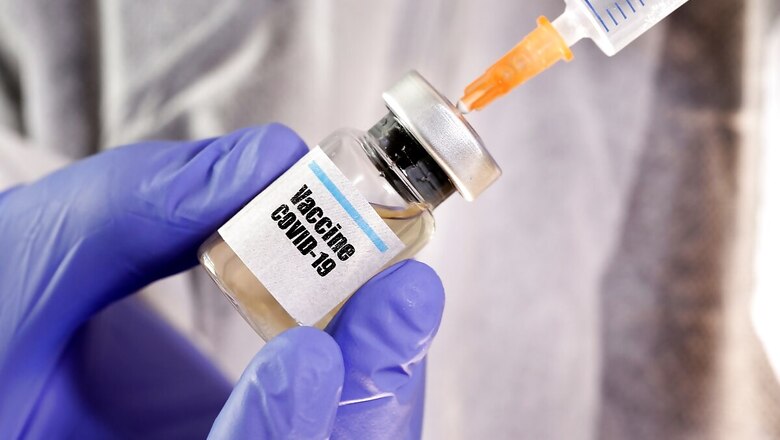
views
As India enters the new year, the country is nearing completion of appraisals for regulatory approval of a vaccine against coronavirus. Once a vaccine is approved, the government faces the onerous and unprecedented task of mass adult vaccination which has never happened before. This involves tasks ranging from storage, last mile delivery to actual vaccination and public messaging to convince people to get the vaccine.
The mass vaccination drive for Polio was the last time the country faced up to the daunting challenge of eradicating a disease. News18 spoke to top virologist T Jacob John, who did pioneering research and work on the campaigns against polio and HIV/AIDS, on the issues and questions the country faces as it gears up for coronavirus vaccination.
Edited excerpts of the interview:
Q: What are some of key challenges we will face in the upcoming vaccination and in vaccine distribution?
A: Well to begin with, the vaccine delivery will be confined to those who are above 18 years of age and the priority group is going to those older than 65 years and those who are younger than 65 years but have comorbidities. People in this broad age group are the most important transmitters of the infection.
There would have to be an immediate policy decision whether those infected in the past are to be vaccinated at all. Government has to take a decision. Before vaccinating the elderly and those below 65 with health complications, what verification mechanism will the central and state governments use? We will have to wait and see how the rehearsals or dry runs go.
The other immediate decision would have to be about the actual vaccination sites. Are they (government) going to give appointments like in the United States or something else? This aspect has to be planned properly because we cannot call people and then ask them to return.
A crucial question that has to be addressed is; do we plan to cover a geographical area completely? Or, are you going to spread the available vaccines across all geographical areas? Is it going to be distributed equitably? Or is it going to be focussed in area after area, geographically so that the virus does not come back there anymore.
Q: You have worked closely on the Polio eradication campaign in the past. What lessons can we draw from that campaign?
A: India does not have an adult vaccination programme. So, it is important to tell people why they need to get vaccinated. Unfortunately, in this day and age, there is vaccine hesitancy. In fact, in some cases, the more educated ones are more sceptical. Some feel vaccines have been rushed through without precautions. So somebody has to educate the public. I have not seen that happening.
In the case of polio, it was an oral vaccine of just two drops and mothers were not very worried because it was not an injection. However, injections are a different ball game. The lesson we learnt from polio vaccination was that micro planning and documentation is very important, otherwise we will leave scope for people being left out. This also increases the importance of data management, everything has to be documented immediately. In that sense, it is like the elections, in its scope.
Q: How do we address the concerns and misconceptions about vaccines among adults?
A: Public education must cover all this. Social mobilization and IEC [Information, Education and Communication] has to be used. India was the king of IEC and the concept of social vaccines. We have forgotten all that. Even against Coronavirus, there was no IEC on behaviour modification and education. It was all through social media. So we have forgotten what we ourselves did in the 1980s, the second half of the 1980s against HIV/AIDS. The institutional memory is zero. So we have to go back and use that institutional memory.
Q: What percentage of population should we cover under the vaccination programme to safely assume that the virus has been brought under control?
A: That is an important question. Individual protection is preventive medicine and that comes under healthcare. But eradicating a disease is a public health goal. The goal has to be set clearly and for that we must have accurate information on the transmission of the virus through surveillance.
For elimination of an infection, 75 per cent of the people must be immune. A certain section of this 75 per cent might already be immune due to prior infection. But it is important to remember that there has to be even coverage in each population cohort. This means that if we set a particular target for vaccination, the coverage has to be even across all districts.
Continuous surveillance has to happen. Just like Polio, this is a silent transmission. Virus is only a year old and its aftermath is not just death alone. Those who have Covid-19 and survived have chronic diseases. That will also lead to morbidities. So it is important to totally eliminate the virus. There was continuous surveillance of Acute Flaccid Paralysis to check for Polio.
Epidemiologists have to fix how many people ought to be tested to check if Coronavirus is spreading silently. For targeting elimination, sewage has to be tested. If sewage is positive, somebody is positive. Virology has to be sewage and people oriented.
Read all the Latest News, Breaking News and Coronavirus News here

















Comments
0 comment